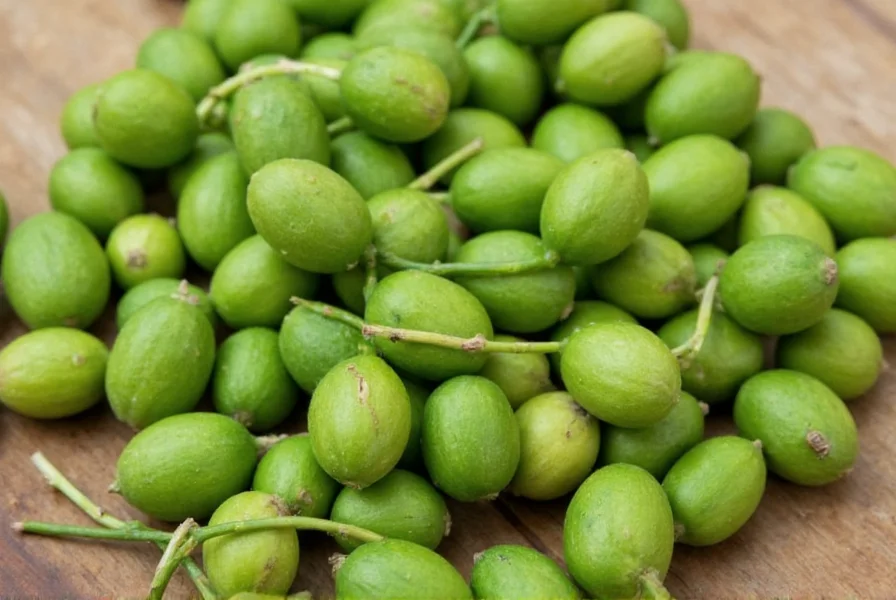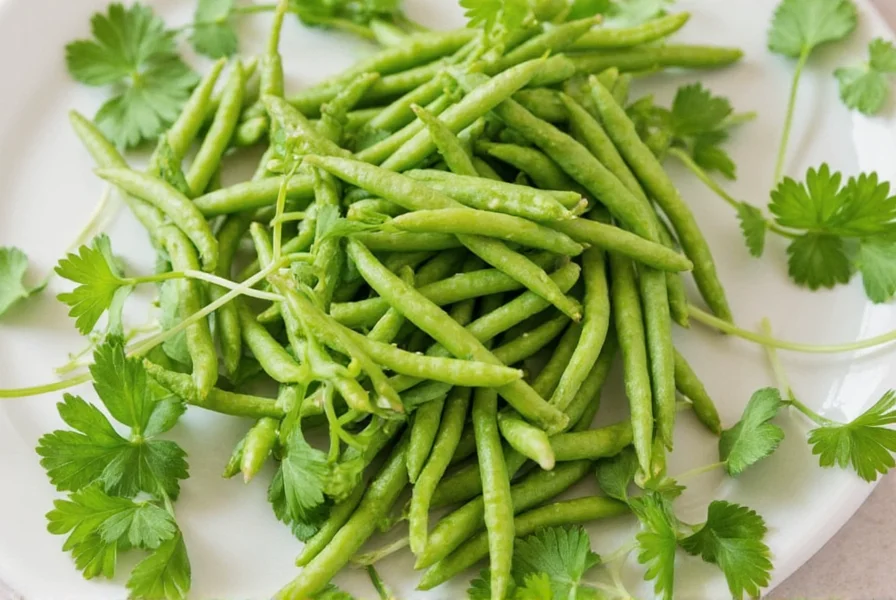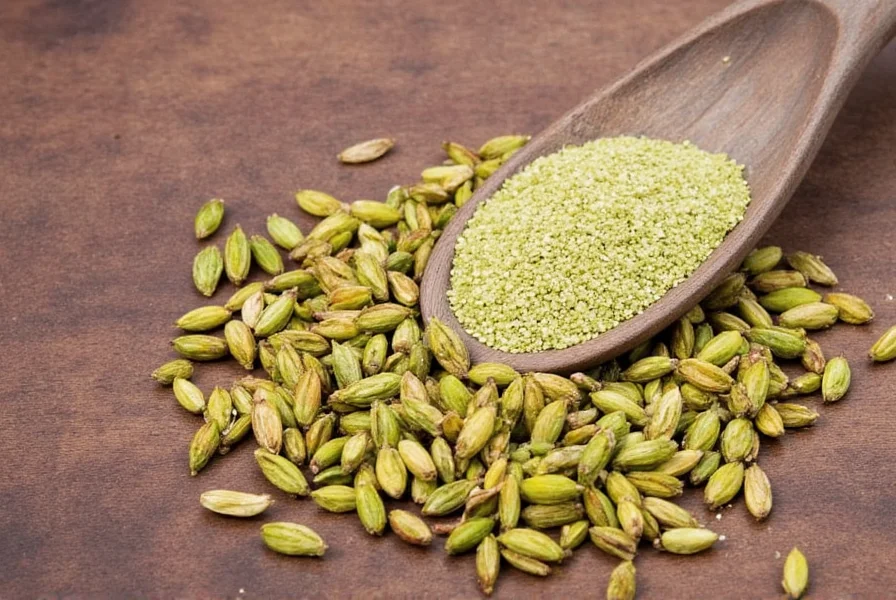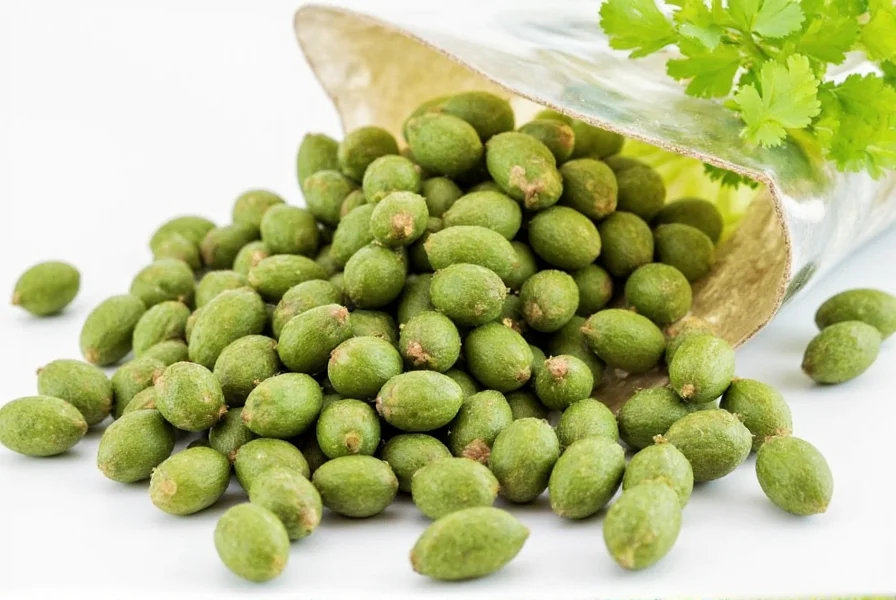Coriander pods are the dried fruit of the Coriandrum sativum plant, containing two small seeds inside. Unlike ground coriander seeds, whole pods offer a milder, floral flavor perfect for pickling, curries, and more. In this guide, we'll explain everything you need to know about coriander pods, including how they differ from seeds, their health benefits, and practical ways to use them in your kitchen.
Table of Contents
- What Are Coriander Pods?
- Flavor Profile & Aroma
- Culinary Uses of Coriander Pods
- Health Benefits of Coriander Pods
- Buying Guide: Choosing the Best Coriander Pods
- Storage Tips for Maximum Freshness
- Recipe Ideas Using Coriander Pods
- Frequently Asked Questions
- Fun Facts About Coriander Pods
- Conclusion
What Are Coriander Pods?
Coriander pods are the dried fruit of the Coriandrum sativum plant. Each pod typically contains two small, round seeds. While most people are familiar with coriander in its seed or ground form (also known as cilantro when referring to the fresh leaves), the whole pod is often overlooked—especially outside of traditional cuisines like Indian, Middle Eastern, and North African dishes.

The pods are harvested once the plant has fully matured and turned brown. They can be used whole, lightly crushed, or even split open to extract the seeds inside. The outer shell adds texture and subtle flavor, while the inner seeds pack more punch—making them a versatile addition to your spice rack.
Flavor Profile & Aroma
Coriander pods have a milder, more floral flavor compared to ground coriander. When toasted or dry-roasted, they release a warm, citrusy aroma that pairs well with both sweet and savory dishes. Here's how they compare to other forms of coriander:
| Form | Flavor Intensity | Aroma Notes | Best Use |
|---|---|---|---|
| Whole Pods | Mild | Floral, Citrusy | Braising liquids, pickling brines |
| Crushed Pods | Moderate | Spicy, Herbal | Curries, marinades |
| Ground Coriander | Strong | Earthy, Nutty | Dry rubs, baking |
| Cilantro Leaves | Variable | Fresh, Soapy (for some) | Garnishes, salsas |
Culinary Uses of Coriander Pods
Don't relegate coriander pods to the back of your pantry—they deserve a starring role in your cooking! Here are some of the best ways to incorporate them into your meals:
- Pickling: Add whole pods to vinegar-based pickling brines for a unique twist on fermented veggies.
- Curry Pastes: Lightly crush the pods before grinding them into curry blends for extra depth of flavor.
- Stocks & Broths: Toss a few pods into simmering stocks or bone broths to enhance the overall aroma.
- Spiced Teas: Infuse warm water or tea with slightly cracked coriander pods for a soothing digestive aid.
- Pastry Recipes: Whole pods can be lightly toasted and added to gingerbread or spiced cakes for a rustic touch.

Health Benefits of Coriander Pods
Coriander pods aren't just tasty—they also come with a host of health benefits! Here's what science says about these tiny powerhouses:
- Anti-inflammatory Properties: According to a 2020 study published in the Journal of Medicinal Food, coriander pods contain compounds that may help reduce inflammation in the body.
- Antioxidant Boost: Rich in antioxidants, coriander helps combat oxidative stress and supports immune function.
- Improved Digestion: Coriander stimulates digestive enzymes and can soothe bloating, gas, and indigestion.
- Cholesterol Management: Research from the Journal of Ethnopharmacology suggests that regular consumption of coriander pods may help lower LDL ("bad") cholesterol levels.
- Blood Sugar Regulation: Animal studies show potential anti-diabetic effects, making coriander an interesting candidate for further human research.
Buying Guide: Choosing the Best Coriander Pods
Not all coriander pods are created equal. Here's how to choose high-quality ones that will elevate your dishes:
What to Look For:
- Color: Opt for light tan to olive-green pods; avoid overly brown or brittle ones.
- Texture: Choose firm pods that don't crumble easily—this ensures freshness.
- Smell: Fresh coriander pods should smell bright and citrusy—not musty or stale.
- Source: Organic or sustainably farmed options are preferred for better quality and fewer pesticides.
Recommended Brands:
| Brand | Features | Advantages | Use Case | Suitable Occasion |
|---|---|---|---|---|
| Spice Garden Organics | Organic, non-GMO, fair trade certified | Eco-friendly packaging, consistent quality | Everyday cooking, gifting | Weeknight dinners, DIY spice kits |
| Global Spices Co. | Whole pods from India, sun-dried | Robust flavor, affordable price | Curry bases, homemade masalas | Festive meals, holiday baking |
| Artisan Pantry | Small-batch roasted pods, gourmet quality | Superior aroma, premium grade | Specialty dishes, food photography | Entertaining guests, fine dining at home |
Storage Tips for Maximum Freshness
Proper storage can extend the shelf life of coriander pods and preserve their vibrant flavors. Here's how to store them like a pro:
- Air-tight Containers: Keep pods in glass jars or resealable bags away from light and moisture.
- Cool, Dark Place: Store in a pantry or cupboard rather than near the stove or oven.
- To Freeze or Not To Freeze: Yes! You can freeze whole pods in vacuum-sealed bags for up to a year without losing potency.
- Roasting Before Use: Toast pods lightly in a dry pan to intensify their flavor before grinding or crushing.

Recipe Ideas Using Coriander Pods
Ready to get cooking? Try these fun and flavorful recipes that showcase coriander pods in style:
- Spiced Pickled Vegetables: Combine coriander pods with mustard seeds, peppercorns, and garlic for a tangy condiment.
- Coriander Pod Chicken Curry: Crush the pods and toast them with cumin for a base that sings with flavor.
- Homemade Chai Tea: Add 2–3 pods to your chai spice mix for a floral warmth that complements cinnamon and cardamom.
- Coriander-Spiced Roasted Carrots: Crushed pods mixed with olive oil and honey make a delicious glaze for root vegetables.
- Gingerbread with a Twist: Substitute a pinch of nutmeg with finely ground coriander pods for a deeper, earthier note.
Frequently Asked Questions
What's the difference between coriander pods and coriander seeds?
Coriander pods are the dried fruit of the coriander plant that contain the seeds. Each pod typically holds two small seeds. The pod itself has a milder, more floral flavor, while the seeds inside have a stronger, earthier taste. When recipes call for "coriander," they usually mean the ground seeds, but the whole pods offer a different culinary experience with their subtle flavor and texture.
Can I eat coriander pods whole?
Yes, you can eat coriander pods whole, though their texture can be quite tough. Many chefs prefer to lightly crush or split them to release their flavor while avoiding the unpleasant chewiness of the whole pod. In dishes like pickles or stocks, they're often used whole and then removed before serving, similar to how you'd use a bay leaf.
How do I use coriander pods in cooking compared to ground coriander?
Coriander pods are best used whole or lightly crushed in dishes where you want a more subtle flavor infusion, such as in pickling brines, stocks, or slow-cooked dishes. Ground coriander provides an immediate, stronger flavor that's ideal for spice rubs, curries, and baked goods. For maximum flavor, many chefs toast whole pods before crushing or grinding them.
Are coriander pods the same as cilantro?
Yes and no—they come from the same plant (Coriandrum sativum), but refer to different parts. Cilantro refers to the fresh leaves and stems of the plant, while coriander typically refers to the dried seeds or pods. The pods are the mature fruit that contains the seeds. Despite coming from the same plant, they have distinctly different flavors and uses in cooking.
How long do coriander pods last before losing their flavor?
Properly stored in an airtight container away from light and moisture, coriander pods can maintain their flavor for 1-2 years. For maximum freshness, store them in a cool, dark place or even freeze them. You'll know they've lost potency when they no longer emit a citrusy aroma when crushed. Toasting older pods can sometimes revive some of their flavor.
Can I substitute coriander seeds for coriander pods in recipes?
Yes, but with some adjustments. Since the pods have a milder flavor than the seeds inside, you'll generally want to use about half the amount of seeds compared to what a recipe calls for in pods. For example, if a recipe calls for 1 tablespoon of whole pods, use about 1½ teaspoons of coriander seeds. Remember that seeds will provide a more concentrated flavor.
Why do some people say coriander tastes like soap?
This soapy taste perception is due to a genetic variation that affects how certain people smell aldehydes, which are chemical compounds found in coriander. About 4-21% of people have this genetic trait that makes coriander taste unpleasantly soapy to them. Interestingly, this gene appears more frequently in people of European descent. The pods themselves may be less polarizing than the fresh leaves for those with this genetic trait.
Fun Facts About Coriander Pods
Here are a few quirky tidbits to impress your fellow spice lovers:
- In ancient Egypt, coriander was found in tombs—including that of Tutankhamun—suggesting it had symbolic significance.
- Coriander pods were once believed to ward off evil spirits and bring good luck—no wonder they were popular in medieval love potions!
- Some people experience a soapy taste from coriander due to a genetic trait—making it one of the most polarizing herbs around.
- The name "coriander" comes from the Greek word koris, meaning "bug," because the unripe leaves reportedly smelled like insects!
Conclusion
Coriander pods may not be the most famous spice in your kitchen, but they certainly deserve more attention. Whether you're looking to boost flavor, improve digestion, or simply try something new, these humble pods offer a world of possibilities. From pickles to pastries, soups to spice blends, there's no shortage of creative ways to enjoy coriander pods.
So next time you're browsing the spice aisle or planning your menu, give coriander pods a second glance—you might just find yourself reaching for them more often than you think. Happy cooking!











 浙公网安备
33010002000092号
浙公网安备
33010002000092号 浙B2-20120091-4
浙B2-20120091-4